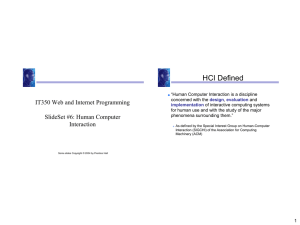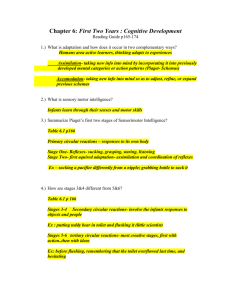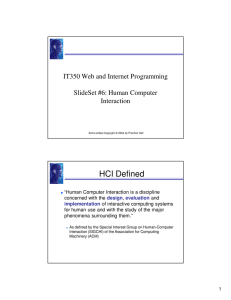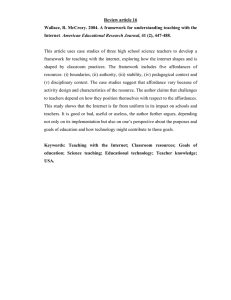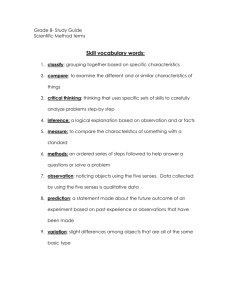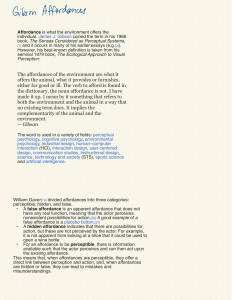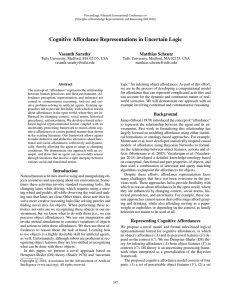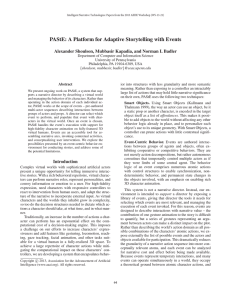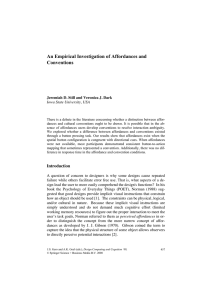HCI Defined IT350 Web and Internet Programming SlideSet #6: Human Computer
advertisement
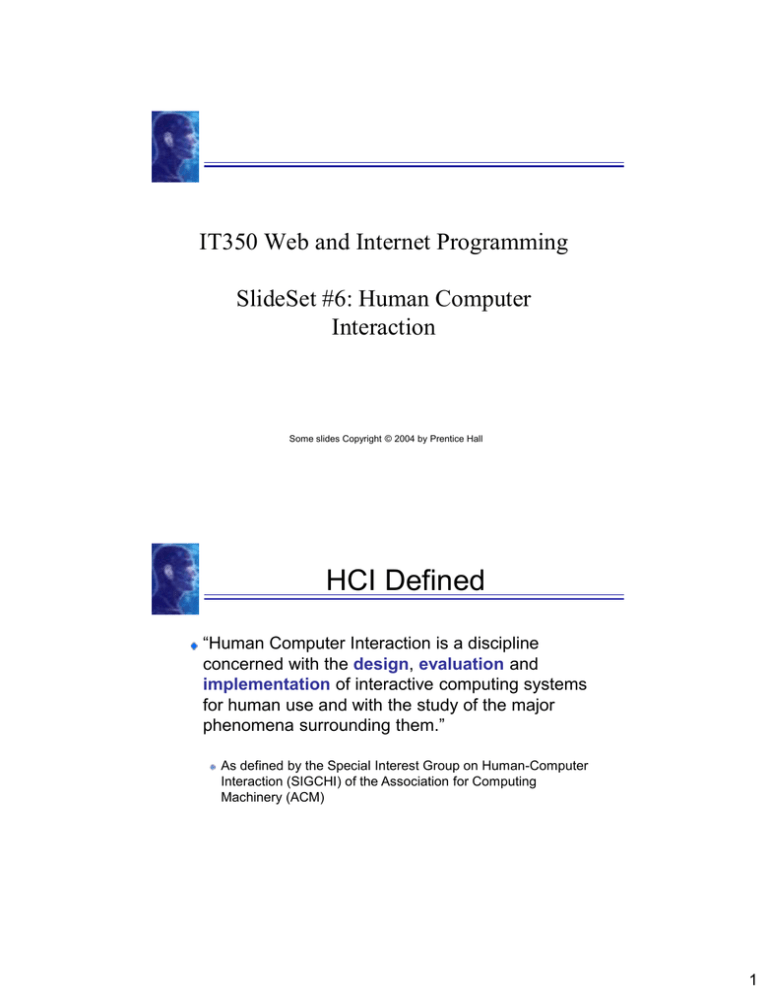
IT350 Web and Internet Programming SlideSet #6: Human Computer Interaction Some slides Copyright © 2004 by Prentice Hall HCI Defined “Human Computer Interaction is a discipline concerned with the design, evaluation and implementation of interactive computing systems for human use and with the study of the major phenomena surrounding them.” As defined by the Special Interest Group on Human-Computer Interaction (SIGCHI) of the Association for Computing Machinery (ACM) 1 Design for ____? • Design needs to align with people’s: – Cognitive abilities – Context – Memory Why do we care? • Because when people try to understand something, they use a combination of 2 Senses • Senses (sight, hearing, smell, taste, touch) provide data about what is happening around us • We are visual beings (“See what I mean?”) • Designing good Web materials requires knowledge about how people perceive Senses and Context • Live Experiment: Yale’s Art school • Give me your first impression of their page. – art.yale.edu 3 Context • Context plays a major role in what people see on a webpage. • Context has a profound effect on the usability of a web site. Context: What do you see? 4 Another example of context: are these letters the same? Yes, but now in context: 5 Senses and Details • Live Experiment: www.amazon.com • Find the Amazon Prime link. Memory: A golden rule? • Humans have limited memory. • Miller, 1956: The Magical Number …. • Lesson: If you don’t exceed this number… – Content more likely to be remembered – Faster recall • Corollary: Don’t expect users to remember many shortcuts etc. 6 Exception #1 • How many do you know? – Phone numbers? – Names? – Passwords? • What’s the key difference? Exception #2 • Do I have to remember everything? – People can scan lists of bullets, tabs, menu items till they see the one they want – They don’t have to recall them from memory having only briefly heard or seen them • Lesson: – Make pages easy to scan – Group similar things together visually – Make wise use of screen real estate 7 Senses and Organization Copyright © 2004 by Prentice Hall Use proximity to group Copyright © 2004 by Prentice Hall 8 Grouping Information • How do we group and organize links/images? – Match the UI to an expected paradigm Live Experiment • www.hboemtb.com • Open the “Urban Design” page • Click on an urban project • Show us some pictures 9 Affordances • Affordance: “The functions or services that an interface provides” – Go back to www.hboemtb.com Perceived affordance • We want affordance to be visible and obvious to the user – A door affords entry to a room – A radio button affords a 1-of-many choice – On a door, a handle affords pulling; a crash bar affords pushing – On a car, turning the steering wheel to the left makes the car go left 10 Web Affordances • Text that looks like a link: it better be a link! • Graphical arrow: affords backward navigation Feedback • Newton’s Third Law of Motion – “For every action there is an equal and opposite reaction” • What is most frustrating about trying to perform some action? • Lesson: • Obvious principle – but doesn’t always happen 11 Providing Feedback • Design in feedback from the beginning • • • • • Change color / shape / size Popup Dialog boxes Add sound Plan for user mistakes…warn them Allow users to see results, confirm action was taken Other things users need • Consistency • Navigation • How to provide without HTML duplication? – Frames – SSI 12
